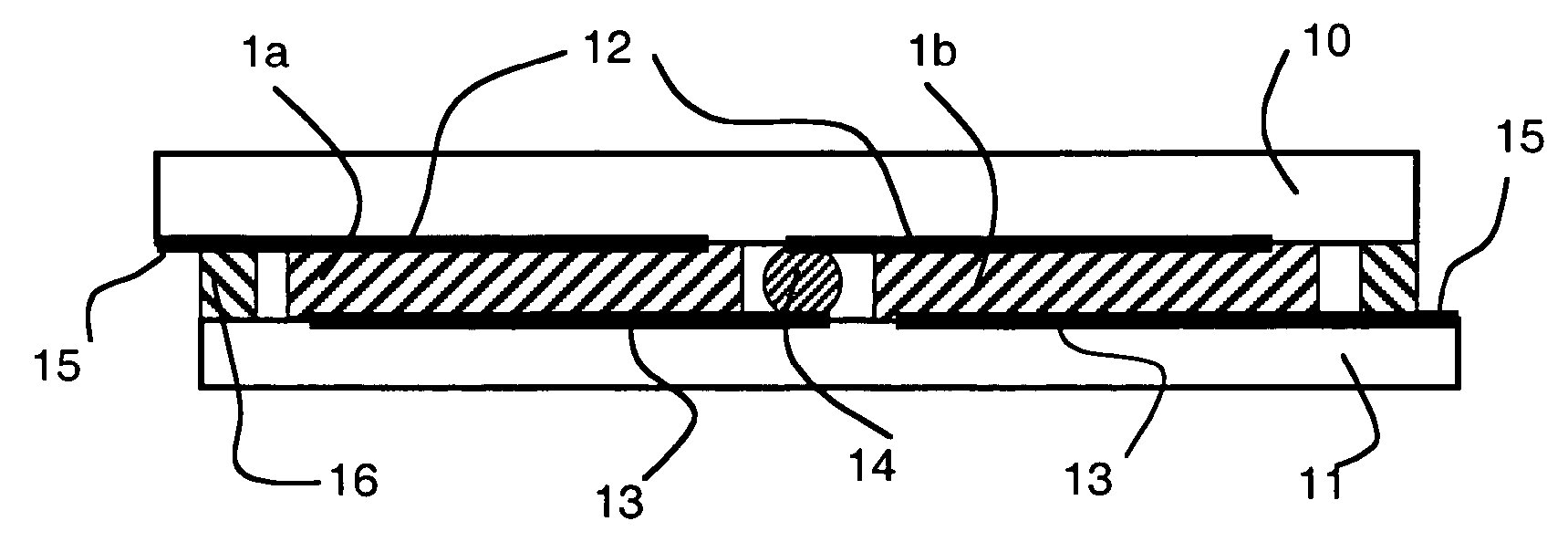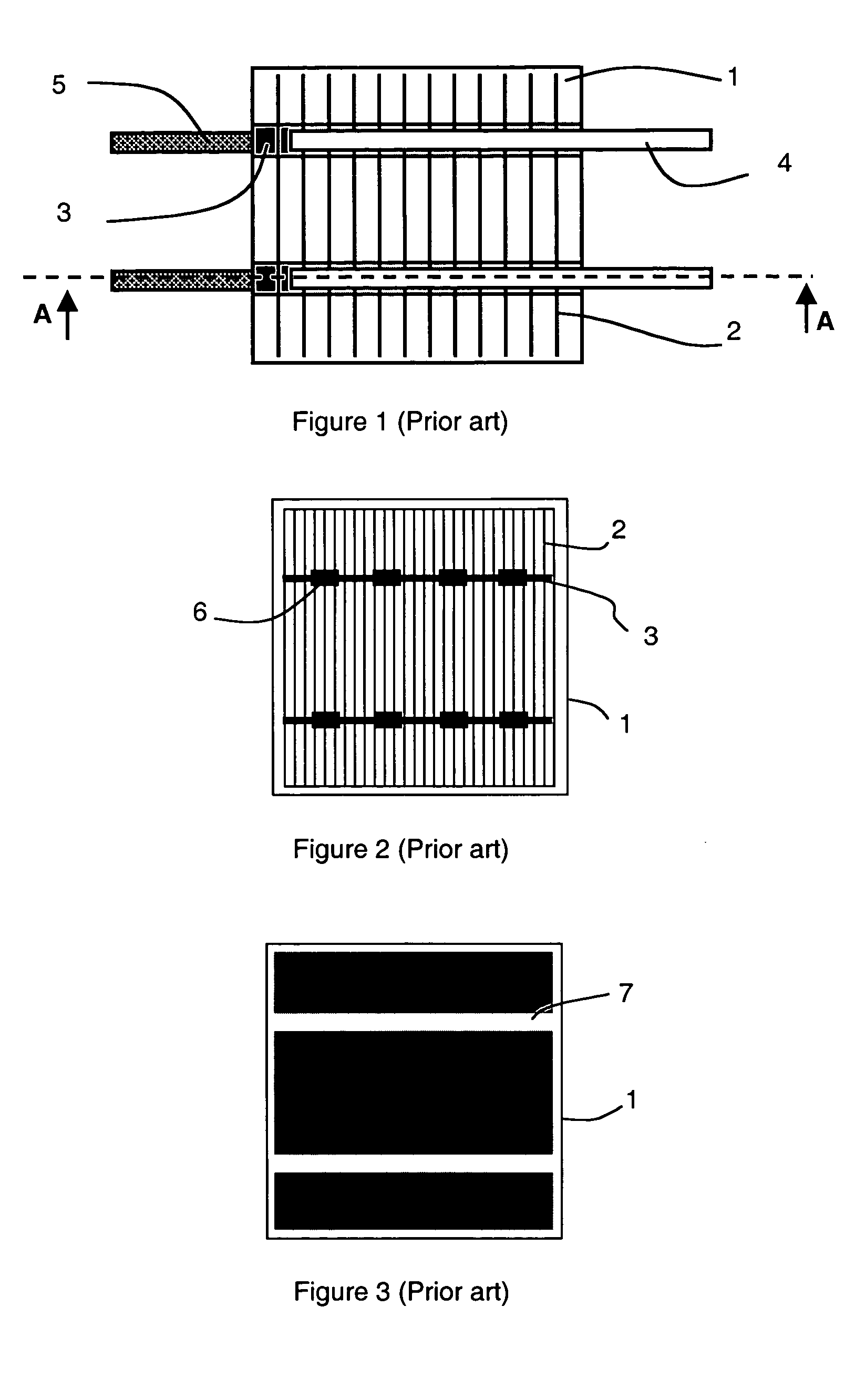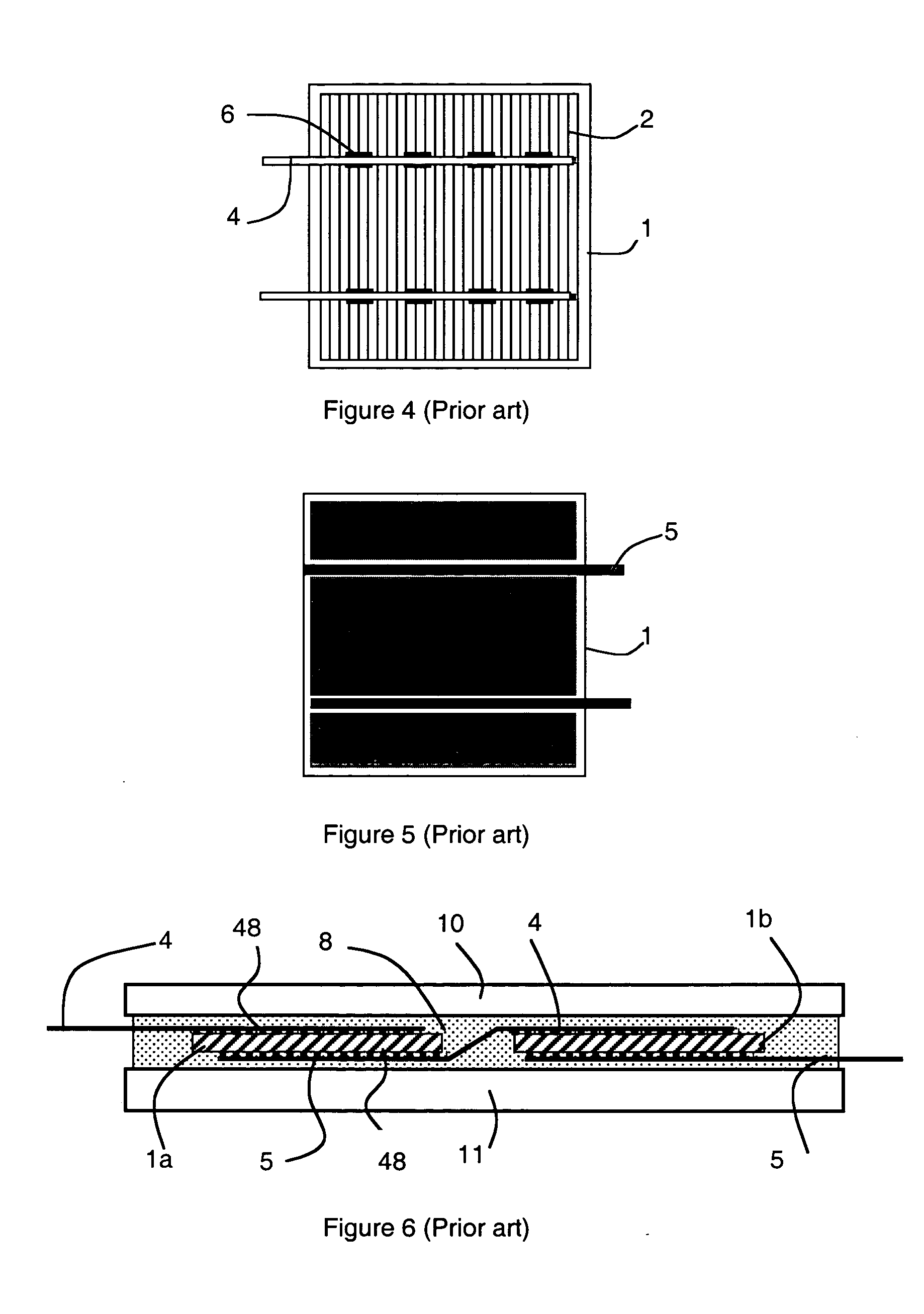Photovoltaic cell assembly and the method of producing one such assembly
a photovoltaic cell and assembly technology, applied in the direction of pv power plants, solid-state devices, accounting/billing services, etc., can solve the problems of non-negligible cell breakage risks, large consumption of silver- and aluminium-based solder paste, and high cost of manufacturing, so as to reduce manufacturing costs and reduce cell efficiency
- Summary
- Abstract
- Description
- Claims
- Application Information
AI Technical Summary
Benefits of technology
Problems solved by technology
Method used
Image
Examples
Embodiment Construction
.
[0042]FIGS. 7 and 8 respectively illustrate the front face and rear face of a cell 1 according to the invention before encapsulation. The front face only comprises the network of fine electrodes 2, from 50 to 120 μm in width. The collector buses 3 and solder studs 6 can be eliminated, which enables the surface taken up by metallization to be reduced, and thus enables the light absorption and consequently the current and power generated by the cell to be increased while reducing the consumption of metal used, in particular silver paste. The rear face comprises a second network of electrodes, generally denser or, as represented in FIG. 8, a metal layer, preferably made of aluminium, practically covering the whole of the rear surface, which enables the performances of the cell to be increased by creation of a rear field. As the solder tracks 7 are eliminated, the cost of a cell is thus decreased both by reduction of the quantity of silver necessary and by simplification of the fabrica...
PUM
 Login to View More
Login to View More Abstract
Description
Claims
Application Information
 Login to View More
Login to View More - R&D
- Intellectual Property
- Life Sciences
- Materials
- Tech Scout
- Unparalleled Data Quality
- Higher Quality Content
- 60% Fewer Hallucinations
Browse by: Latest US Patents, China's latest patents, Technical Efficacy Thesaurus, Application Domain, Technology Topic, Popular Technical Reports.
© 2025 PatSnap. All rights reserved.Legal|Privacy policy|Modern Slavery Act Transparency Statement|Sitemap|About US| Contact US: help@patsnap.com



